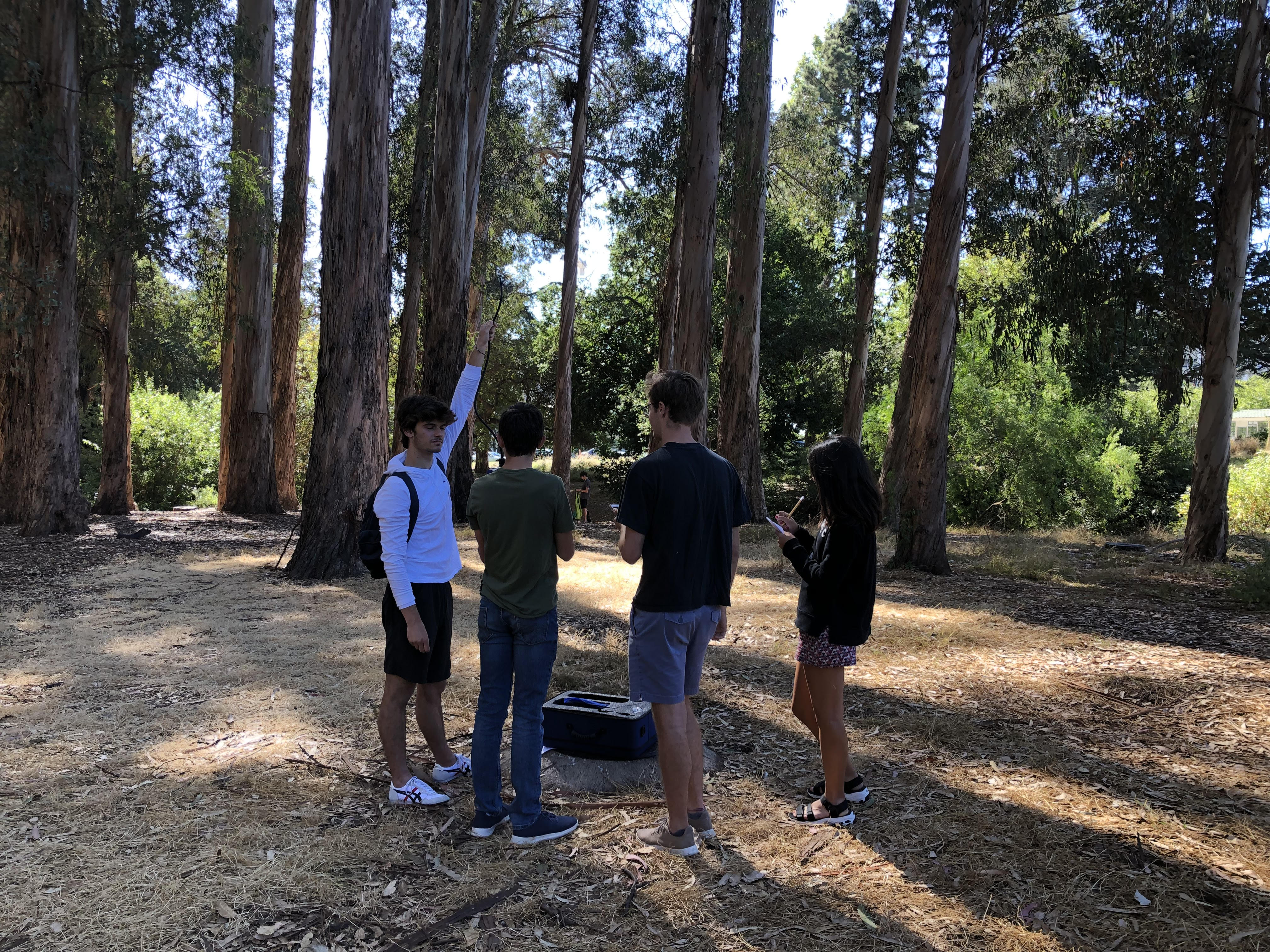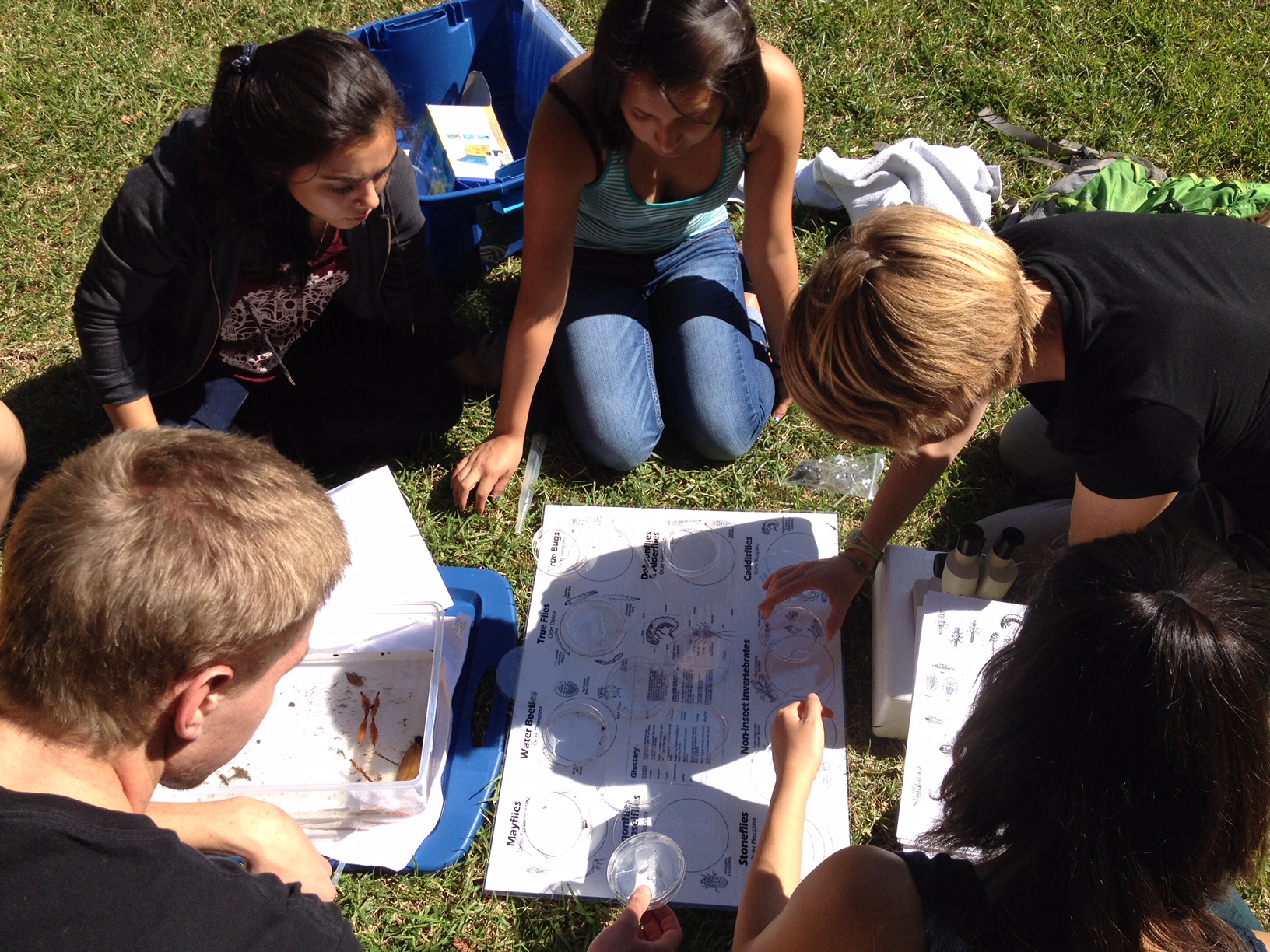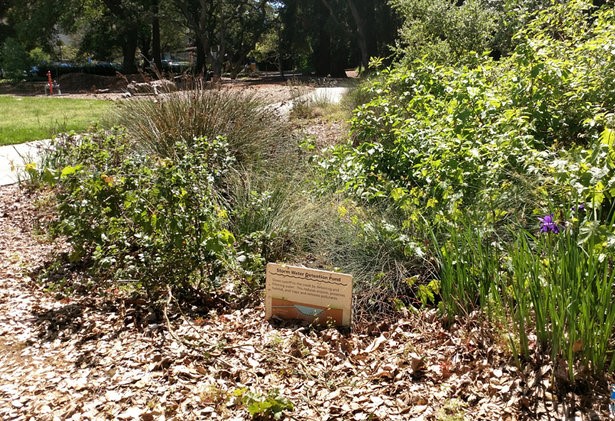

Course Description
LandscapeArch 12
Instructor: G Matt Kondolf
Fall term
Lectures: Tues & Thurs 1230-2pm Rm 112 Wurster
Lab sections: attend one 2-h section (select from sections Tues, Wed, Thu, Friday)
LA12 meets the biological science breadth requirement
This course introduces students to the interdisciplinary field of environmental science as a basis for sustainable development, planning, and design. We get students outside to maximize interactive, hands-on learning, taking advantage of the Berkeley campus and region as an outdoor laboratory, to gain hands-on field experience with local environmental issues such as stream hydrology and ecology, air pollution, biogeochemical cycling, and strategies for sustainable design, including urban agriculture and energy efficiency in buildings.
>> LA12 Course Description 2019
Lab Sections

Air Quality Lab
This lab exposes students to outdoor air quality issues we face here in Berkeley and in cities around the world. Students use monitoring equipment to measure and compare air quality at different locations in Berkeley helping students develop important environmental research skills of using field equipment, collecting field samples and analyzing data.

Urban forestry Lab
This lab provides valuable experience collecting data and using tools developed by urban foresters to assess the characteristics of trees in urban areas and the elements of the microclimate. Students measure the characteristics (tree height, canopy cover, etc) of the different locations on the Berkeley Campus. Elements of the microclimate (temperature, relative humidity, solar radiation, etc.) are also measured in the tree groves and over a lawn area to serve as a control. After making the various measurements, we use the data to calculate solar heating and determine if the microclimates protected by tree grove and the adjacent open area are within the human comfort zone using the Olgyay Bioclimatic Chart.

Strawberry Creek Lab
In 1857 University of California moved to its current campus, on land adjoining Strawberry Creek. Strawberry Creek and its watershed have a rich history of degradation due to development in the late 19th and early-mid 20th centuries, followed by creek restoration efforts towards the end of the 20th century. We walk the length of the creek on-campus, observing changes downstream and characteristic features. We measure channel morphology, such as width and depth, and measure flow velocity and cross sectional areas to estimate flow.

Hydrogen car demonstration.
Hydrogen fuel-cell cars seemed like a futuristic concept a few years ago, but the technology has greatly advanced and the prices have dropped significantly. The main limitation now is the availability of hydrogen stations for refueling. Tim Lipman of the Energy and Resources Group is a leading researcher in electric and fuel-cell cars, and he provides a demonstration of how the hydrogen cars work. (The class breaks into small groups, each with the opportunity for a short demonstration.)

Macroinvertebrates lab
Many insect species have life stages in streams. Because of their ubiquity and diversity, and because the community of benthic macroinvertebrates present in a stream reflects conditions over preceding months and years, they have become one of the most important measures of water quality. In this lab we sample macroinvertebrates in Strawberry Creek with a kick net and sort the collected invertebrates down to family level. We can then use the relative abundance of sensitive vs non-sensitive species as an indicator of water quality that integrates conditions in the stream over time.

Campus Green Infrastructure Lab
Over the past two decades, campus has obtained grants and devoted its own funding to multiple green-infrastructure projects to manage stormwater sustainably. We stop at projects across campus, considering stormwater facility type, function(s), siting and contributing area, and design. At the last stop, we perform some simple calculations of stormwater runoff from a small parking lot, estimate the size of a rain garden to manage the runoff, and propose a preliminary design for the site.

Urban Garden Lab
We learn about urban agriculture at Berkeley’s student organic garden: its history and current management challenges. We see the extensive use of compost and gain insights into seasonal cropping patterns suitable to the site. We also sample soils to determine soil type, structure, and pH, and and conduct tests to determine infiltration rates, all methods that can be applied in independent student projects.

Sustainable Building Tour
UC Berkeley office of sustainability and energy has initiated a number of strategies to promote campus-wide sustainability. The Lower Sproul Plaza redevelopment project was a cross-disciplinary effort, and involves use of rainwater to flush toilets in Eshleman Hall, extensive natural lighting in Eshleman and MLK Student Center, roof-top solar panels to augment electrical supply, and water fountains equipped to easily refill water bottles. In this lab, we examine sustainability features incorporated into Lower Sproul Plaza and adjacent buildings.